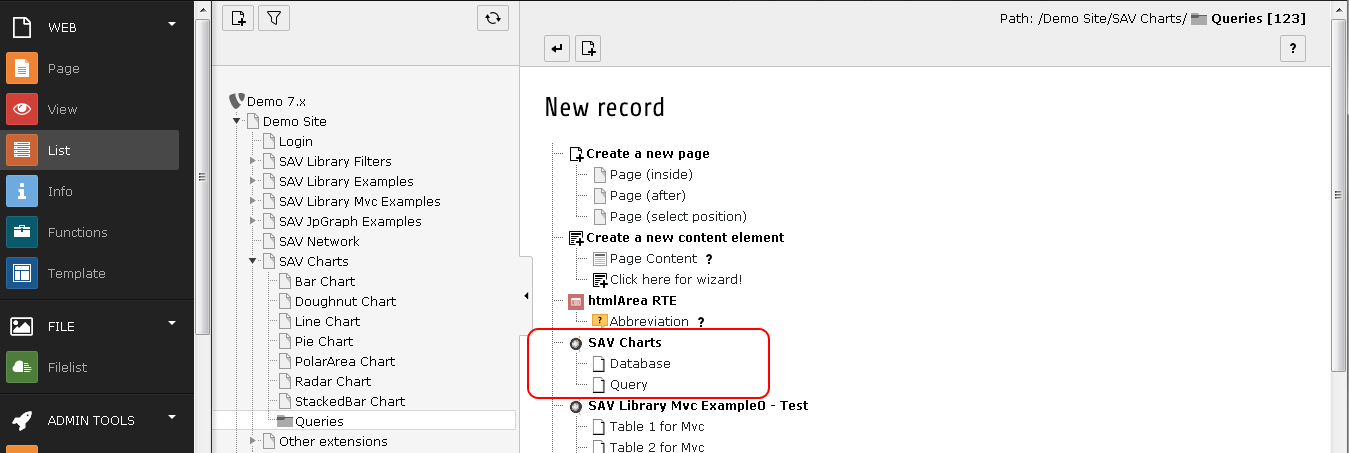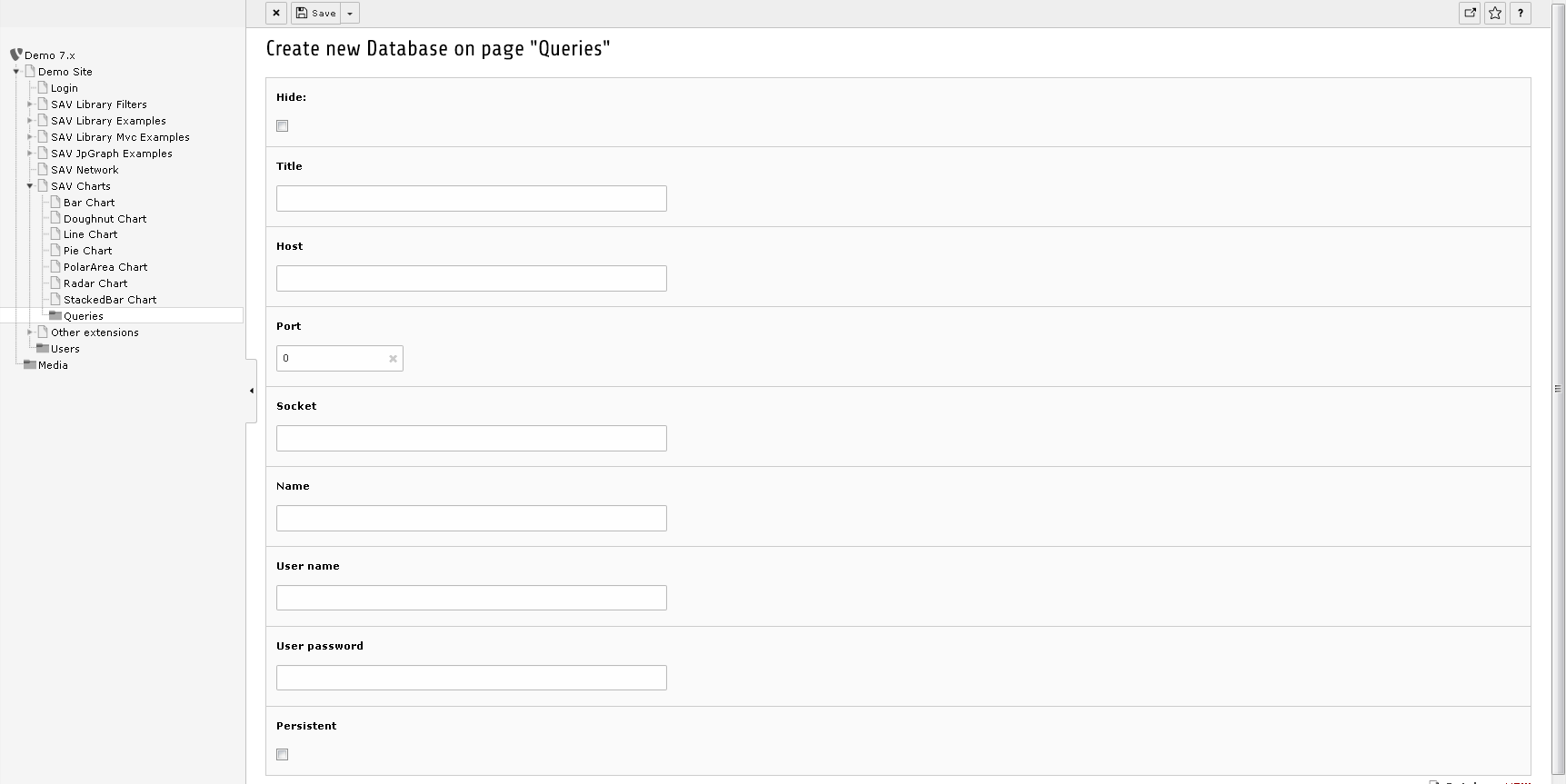Using and Developing Query Managers¶
Query managers are used in <query> tags to execute queries which can be used in charts.
SAV Charts extension comes with an internal query manager named savcharts which can
deal with TYPO3 database queries as well as queries from other databases.
Using the Query Manager¶
In the backend in list mode create a new record in a page or a folder.

Select Database if you need to access to an external database,
fill the different fields and save.
Tip
You do not need to create a new database access if you only need to access to the current TYPO3 database.

Select Query to create a query. Select a database (default is
TYPO3 Database), fill the different clauses and save.
The following figure illustrates the query to display the number of pages per year.

Assuming that the new query has the id 1, the following flexform
configuration displays a bar chart with the
number of pages per year.

In the Queries section, the default query manager savcharts is used.
It calls the query whose uid is 1.
The Data section of the flexform overloads the template to display
only a single barchart
with the data provided by the query, as explained in the section Using Advanced templates.
Important
The flag Allow queries (Admin) must be set by an Admin user in the content
flexform to execute queries.
Go to the frontend to display the resulting chart.

Developing Your Query Manager¶
Query managers are implemented by means of hooks.The hook for the internal query manager
is in Classes/Hooks/SavChartsQueryManager.php. This class extends the abstract class
AbstractQueryManager (Classes/Hooks/AbstractQueryManager.php)
which itself implements the interface QueryManagerInterface
(Classes/Hooks/QueryManagerInterface.php).
You can develop your own query manager by providing a hook which must
be added in the file ext_localconf.php
of your extension.
Assuming that your vendor name is MyVendorName and your extension
name is my_extension. Assuming also
that you have written your manager as the class MyQueryManager
in Classes/Hooks/MyQueryManager.php.
Finally, assuming that you want to name your query manager myManager, you should add
the following code in ext_localconf.php of your extension.
$TYPO3_CONF_VARS['EXTCONF'][$_EXTKEY]['queryManagerClass']['myManager'] = \MyVendorName\MyExtension\Hooks\MyQueryManager::class;
